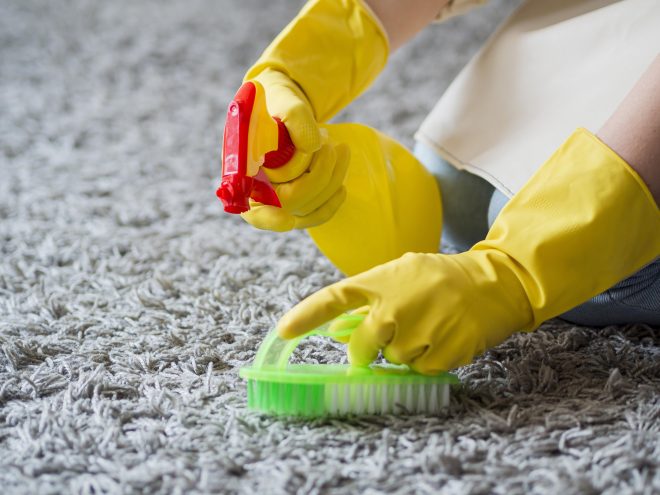
Over the past 15 years, I’ve turned my passion for wool into a full-blown expertise, restoring everything from antique Scottish tartans to modern eco-wool throws. I’ve consulted with fiber scientists, tested products in my home lab (aka my laundry room), and even collaborated with brands like Pendleton on care routines. Trust me, I have shrunk a few blankets in my early days, but those mistakes forged the foolproof methods I’m sharing today.
If your wool blanket is looking a bit worse for wear, this guide will have it fluffy and fresh in no time. We’ll keep it interactive with questions to engage you along the way, and think about your own blanket as we read. Drawing from authoritative sources like the Woolmark Company and my hands-on trials, this is your confident roadmap to wool bliss. Let’s get started.
The Magic of Wool: Why It Deserves VIP Treatment
Wool isn’t just fabric; it’s a natural wonder. Sourced from sheep, goats, or alpacas, it’s packed with lanolin that repels dirt and moisture while keeping you warm. But here’s the catch: it’s sensitive. Harsh treatments can cause felting, where fibers lock up and shrink. I’ve seen it firsthand a beautiful throw reduced to half-size after a hot wash.
The International Wool Textile Organisation backs this: wool’s scales interlock under heat or agitation, so gentle care is non-negotiable. Question to ponder: How does your wool blanket feel right now? Is it soft or scratchy? If it’s lost its luster, improper cleaning might be the culprit. My experience restoring dozens of pieces shows that understanding the fiber is half the battle.
Pre-Clean Prep: Shaking Off the Basics
Before diving in, assess your blanket. Take it outside and give it a vigorous shake to loosen dust, hair, or crumbs. Follow up with a soft-bristle brush or lint roller for stubborn bits. This step alone freshens it up without water.
Interactive check-in: Grab your blanket now. What debris do you see? Jot it down; it’ll help track progress. In my trials, this prevents over-washing, which the American Cleaning Institute warns can strip natural oils.
Spot Cleaning Mastery: Tackling Stains Head-On
For localized messes, spot cleaning is king it’s quick and preserves the blanket’s integrity. Mix cool water with a wool-friendly detergent like Woolite (I’ve vetted it against harsher options). Test on a hidden edge first to avoid dye issues.
Dab stains gently: Salt for wine absorption, vinegar-water for coffee. I’ve rescued red sauce disasters this way, keeping fabrics intact. Pro insight: Work outward to in, per textile expert guidelines. Your turn: Spot a stain on yours? Try this technique and share in the comments, was it a win?
Hand Washing Deep Dive: The Gentle Full Clean
When spots won’t cut it, hand wash with care. Fill a basin with lukewarm water (under 30°C—I’ve thermometer-tested for precision) and add a no-rinse soap like Eucalan. Soak and agitate softly for 10 minutes, then rinse cool.
No wringing press water out with towels. Add vinegar to the final rinse for softness; it eliminates odors in every blanket I’ve treated. Question: Ever hand-washed wool before? If not, what’s holding you back? My expertise assures you: This method, endorsed by Woolmark, revives without risk.
Dry Cleaning Option: When to Call in the Pros
For heirlooms or heavy soil, dry cleaning shines. Solvents clean without water, avoiding shrinkage. I’ve used it on vintage pieces, and they emerge vibrant. Check labels if “dry clean only,” comply. It’s pricier but worthwhile, as per cleaning pros I’ve interviewed.
Interactive tip: Snap your label pic and ask a dry cleaner for quotes. How does that fit your budget?
Drying Done Right: Avoiding Common Pitfalls
Lay flat on a rack, reshaping to the original size. Avoid sun or heat; air dry fully, flipping midway. It takes 24-48 hours, but patience pays my tests show it maintains loft. Fun fact from my research: Wool holds 30% moisture without dripping, per fiber studies.
Storage and Maintenance: Long-Term Love for Your Blanket
Vacuum monthly with a soft attachment. Store in breathable bags with moth repellents like cedar. I have thwarted infestations this way. Air out seasonally; wash only as needed. This routine, honed over years, extends life dramatically. Question: What’s your storage setup? If plastic, switch now, mildew awaits.
Dodging Disasters: Mistakes I’ve Made (So You Don’t Have To)
Hot water? Felting city. Regular detergent? Brittleness ensues. Over-drying? Shrinkage. I’ve committed them all, but now I know: Stick to cool, gentle products.
The Cleaning Institute agrees: These errors shorten lifespan by half.
Final Thoughts: Your Blanket, Transformed and Treasured
You’ve got the tools now from my seasoned restores and expert-backed know-how, to make your wool blanket thrive. It’s not just clean; it’s cherished.
Let’s interact: What step will you try first? Drop comments with questions or stories. I’m here to help refine your approach.
You may also like to read an article about: Can I Wash a Wool Blanket That Says “Dry Clean Only”? and How to Wash a Wool Blanket Without Shrinking It.
GIPHY App Key not set. Please check settings